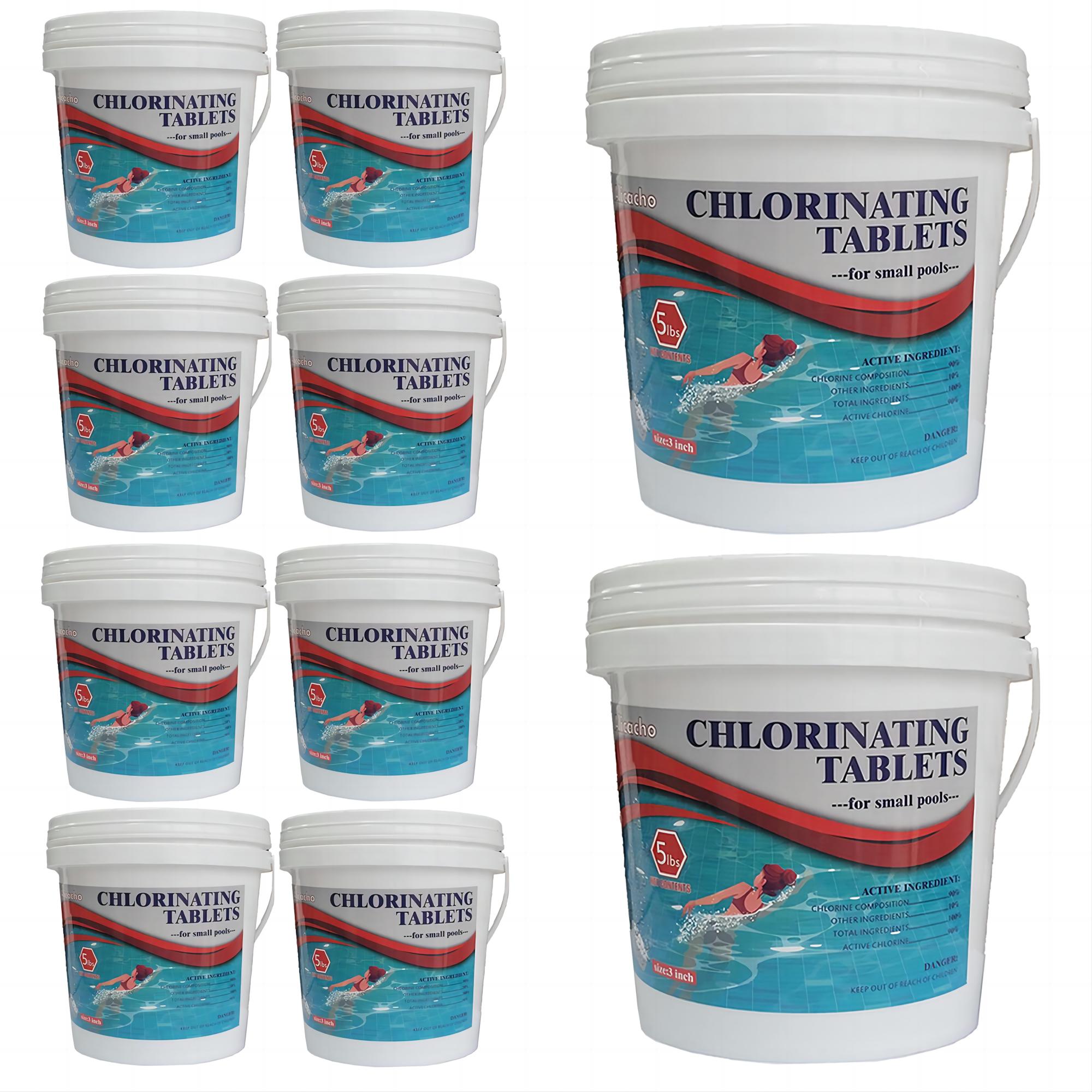Cyanuric acid plays a vital role in maintaining the best for your pools. CYA as what many also call it, is known as a pool stabilizer and conditioner. Once its level is too low, methods on how to raise cyanuric acid in pool must be studied since it is one of the crucial factors when it comes to protecting chlorine from being affected by the ultraviolet rays of the sun. Once levels of cyanuric acid are too low, it can lead to an unsanitary pool.
You must know the right levels of CYA that need to be maintained as it can’t also be too high. As a pool owner, it is necessary to know what can happen once CYA levels are too low, and we are going to figure out all of it in this article. We are also going to dig deeper into the different methods on how to raise cyanuric acid in pool, so let us start!
Part 1. What is the ideal level of Cyanuric Acid in a Pool?
CYA or cyanuric acid is known to be one of the common pool chemicals that can help you protect your chlorine from the harmful ultraviolet rays of the sun. Once recommended or the right level of cyanuric acid is present in your pool waters, chlorine can be expected to work more effectively, helping pool owners achieve a clean, safe, and healthy pool water and environment.
If you are going to look at chlorine in its natural state, chlorine is unstabilized, which is why it can be easily destroyed by the rays of the sun. To protect chlorine, CYA works by creating temporary and weak bonds with chlorine in your pool. The created bond will protect chlorine from the sunlight and must last until chlorine is consumed by the process of disinfection or oxidation of the contaminants of the water.
Cyanuric acid has lots of benefits, it has effects on your pool’s pH, hardness, and even alkalinity. Once you have ensured that you keep the levels of CYA in control, you will need less effort in dealing with pool water chemistry. It is important to know that free chlorine can be quickly consumed when you do not use or apply any stabilizer in your pool, making your pool water unprotected. If your pool is uncovered and exposed to the rays of the sun for two hours, it can lead to having 75 to 90 percent of your pool’s chlorine destroyed. On the other hand, once your pool water is exposed to the direct rays of the sun or sunlight, chlorine’s half-life would approximately be 45 minutes only.
To utilize all the benefits of CYA, you have to make sure to meet the needed level of it. Of course, the level of CYA will still depend on the size of your pool as well as the amount of chlorine that you have to use for it.
You have to make sure that the level of free chlorine is 7.5 percent of the pool’s cyanuric acid levels. In general, you have to maintain the ideal cyanuric acid level in the range between 30 and 50 ppm. If your pool is situated in areas with really high sunlight levels or if you have a saltwater pool, you may need more stabilizer, and if this is the case the levels of your CYA must be in the range between 60 and 80 ppm. In case you have an indoor pool, there is no need to use CYA unless it can still be exposed to sunlight.

Part 2. What Will Happen if Cyanuric Acid is Too Low?
Before we talk about the different methods on how to raise cyanuric acid in pool, it is necessary to figure out what happens if cyanuric acid is too low in your pools. Once the CYA level in your pool is low, you have to expect more dilemmas concerning chlorine, and a lot of unsanitary water issues.
1. Chlorine can’t act as an effective sanitizer effectively.
One of the major effects of having a low cyanuric acid level is the lower effectiveness of chlorine as a sanitizer. Since sunlight eats your chlorine, there will not be enough chlorine to keep your pool water sanitized. Once this happens, pollutants, viruses, bacteria, and a lot more can easily surface on your water, and will eventually make your pool water dirty, unsafe, and unhealthy.
2. Pool water’s chemistry is unbalanced.
One of the most important factors in keeping your water chemistry in check is CYA. Once it is not enough, levels of chlorine will drop, and the needed chlorine to keep your pool water healthy will also be inadequate. Once it happens, there will be a chain reaction of effects such as effects on total alkalinity levels and pH of the water.

3. Algae growth can turn your pool water to green.
Once chlorine is not effective anymore, pool water is not clean, and when pool water isn’t clean, it would be a perfect habitat and breeding ground for algae to grow. This is not only about turning your pool water to green, you also have to consider other bacteria that can lead to forming black algae or pink slime. Once these bacteria and algae are present in pools, it will not be automatically safe for swimmers. If you own a pool, this would be one of your nightmares! You can click on this article to see how to remove algae.
And these are only some of the possible effects once cyanuric acid is too low. Any pool owner does not want to experience any of this, and more, so it would only be useful to also know how to raise cyanuric acid in pool, let us discuss it in the next part of the article.
Part 3. How to Raise Cyanuric Acid in Pool?
There are two great ways how to raise cyanuric acid in pools, the first one is to add stabilized chlorine, while the other one is to add a pool conditioner and stabilizer which can be pure cyanuric acid.
But before getting excited and adding these two, the initial thing that you have to do is to test your water through the use of test strips or a liquid test kit. Once you see irregularities in levels, you have to make sure everything is initially balanced, such as your pH and alkalinity levels.

1. You can add stabilized chlorine.
If you purchased dichlor or trichlor granules or tablets, which are forms of stabilized chlorine, then your chlorine will come with cyanuric acid. So in case you have been using unstabilized chlorine or liquid bleach, this can be one of the ways to introduce CYA to your pool water. In case you have chronically low CYA levels, you can try to look for granular or tablet chlorine products that contain cyanuric acid. You can also include them as part of your maintenance procedures, so it will be nice to have them stored as well.

2. You can add a pool conditioner stabilizer or pure cyanuric acid.
If you want to gain control over the amount of cyanuric acid in your pool water, you can try to add pure CYA directly to it. CYA is also known as a chlorine conditioner or stabilizer. As a general rule of thumb, if you add 3 ounces of pool stabilizer to your pool water, a rise of 10 ppm for every 10,000 gallons of pool water will be observed. It should be put into mind the required levels of CYA which is in the range between 30 and 50 ppm. You do not have to rush things, as it is easier to raise levels of CYA than to reduce it, so you better make sure you are doing the right steps. It should also be remembered that CYA is an acid, and once it is too much, it can result in damage to your pool, such as damage to your vinyl pool liners. It is also a must to make sure that you have all the protective gear with you such as goggles and acid-resistant gloves to always be safe from possible danger.
Usually, you only have to add cyanuric acid once or twice a year depending on factors such as pool locations, results of test strips, and even the load of bathers.
Part 4. FAQs
1. Does Shock Raise Cyanuric Acid?
Pool shocking can also raise levels of your CYA, depending on the type that you use. In case you use a stabilized chlorine for shocking, then it could increase CYA levels because of the stabilizing ingredient.
2. Will Low Cyanuric Acid Make Pool Cloudy?
Yes, this is most likely to happen if you have an outdoor pool that has a low cyanuric acid. To keep your water clean, CYA helps a lot. Once it is low in levels, chlorine will quickly deplete, and you will likely have unsanitized water which is not safe for swimmers.
3. Why is My Pool Cloudy after Stabilizer?
Once there is too much stabilizer in your water, it can cause your chlorine to become less effective when it comes to killing bacteria and algae. Aside from that, you can also experience hazy or cloudy water, imbalanced pH levels, and other water quality issues.



